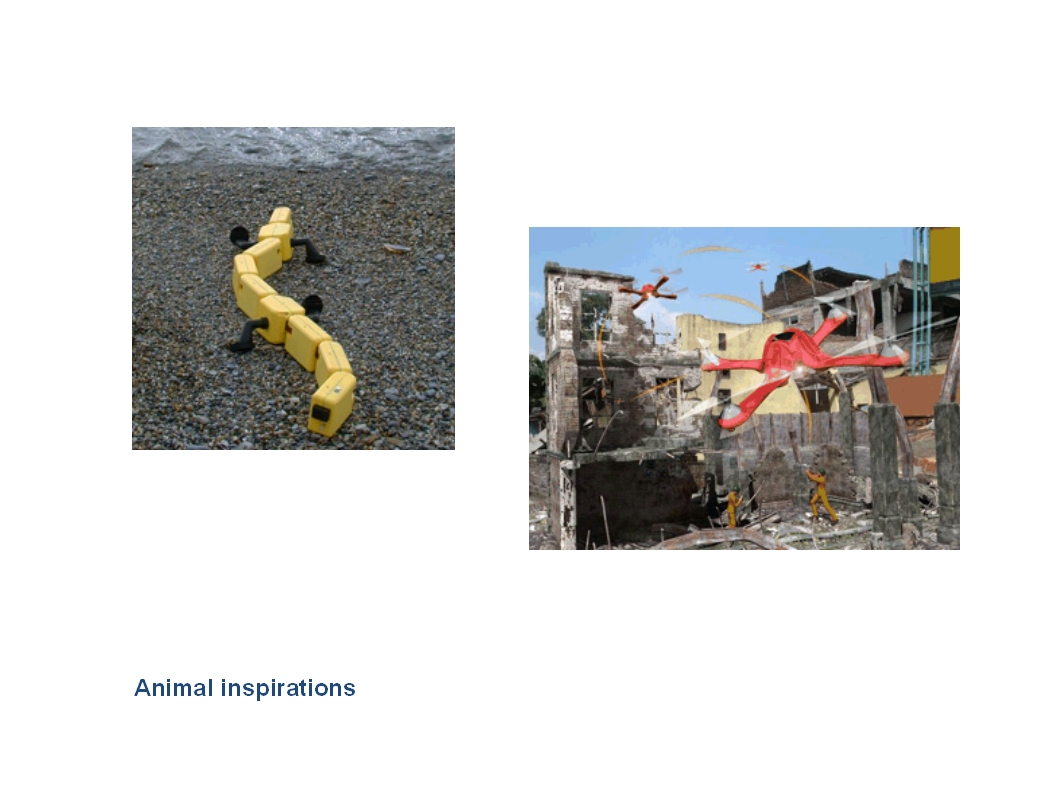What can be gleaned from looking into these developments is, among other things, how inspirations are taken from the living world, rather than from humans alone: flying, crawling, swarms, foraging, and so on. But it is also clear that many of the purposes for which assistive agents are built, involves equipping them with advanced sensory systems and information-handling capabilities--making the most of what advanced ICTs are good at. Most obvious are applications in law enforcement, rescue operations and military practice, with potential to transform the assessment of risk and danger, and the ways in which decisions are made in performance-critical scenarios. The interactions between humans and machines become intimately inter-dependent, blurring the boundaries between human judgement and the functions of artifical agents. Consequently, there are issues of managing the unstructured complexity of combat or other critical circumstance, and whether machine behaviour is predictable enough and thus reliable. There are also liability issues involving questions of how to assess misbehaviour or crime and what other consequences there might be, in particular, in video-game like scenarios for remote operations.
Robots who are designed to work in the home, in the streets, in transits, in the natural environment, and in many occupational settings, are also likely to be designed to collect, process and broadcast data on persons and circumstance. Such developments will have serious implications for the protection of liberties and the autonomy, privacy and dignity of persons. There are issues of internal security as well, which requires adequate understanding of what employees with access to robotics devices are actually capable of. So far, popular imaginations have been ahead of the policy discourse in this respect, for example, the sitcom "Big Bang Theory". In one of the episodes, Howard calls his friend who remote-controls spy drones, to divert a drone on its route to check out a house in Los Angeles full of supermodels. Although, this scenario is designed as comedy, it is actually not that far fetched, i.e., the potential to take advantage of access to sophisticated observation and investigative technologies for spurious purposes—no official mission or designated purpose. These are all issues that need critical reflection and debate, involving occupational experts, policy-makers and other decision-makers, as well as publics.
